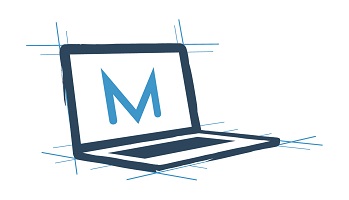Disrupting the Modern Workplace, Part II: When disruptors get disrupted
I haven’t been on my game this week. If we’re honest, I think a lot of us have been a little bit off. Covid-19 has been looming for months, yet somehow we failed to anticipate how the virus would impact our daily lives. In North America, we watched as the pandemic exploded first in Southeast Asia then quickly moved across Europe. Most of us expected we would see it here, but I think that in our hubris we never expected a major disruption to business and society. Our culture isn’t one to slow down. We tend to believe we are above the fray and can weather any storm.
It’s not a secret that I claim to be a technology disruptor. As IT pros working with Microsoft 365, we want to change the way that our organizations work. Our goal is to empower our end users. Change typically takes time and being a disruptor in technology is as much about being a salesman as it is about being a skilled technologist. We are used to pitching new solutions, talking about the benefits of new technology, and working to build allies in our organizations. Workplace disruption is typically a slow and methodical process. Even if we know the value these tools have it can take time to deploy them because of the impact they would have on end users, infrastructure requirements, and workplace culture that isn’t always ready for change.
Six months ago, we couldn’t have predicted the impact a global pandemic would have on the workplace. What was once unthinkable is now our reality. The disruptors have now joined the ranks of the disrupted. Pitching a modern workplace was always about creating a nirvana that would empower workers to work from any location, on any device with total security and unlimited freedom. It sounds great on paper, but a lot of organizations weren’t ready to adopt remote work models, so change was incremental. Many of the modern workplace tools were considered ‘nice-to-haves,’ but not essential for continuing day to day operations. Our roadmaps have been filled with bucket list items from the Microsoft 365 suite of tools, but for most of us those tools aren’t deployed yet. However, we can’t unmake decisions that were made six months ago. It would be easy to say, “If we had deployed Teams globally six months ago, we wouldn’t be in this situation,” or, “If we had only decided to set up a Cloud management gateway or co-manage our Windows 10 devices we could address this issue on PCs.” That’s not productive. Talking about everything we could have done to prepare for a crisis isn’t helpful amid a crisis. As a paramedic I had to learn to take new information as it came in, prioritize it, and make treatment decisions without questioning whether the decisions I made before were correct or not. There is a time to evaluate what we could have done, but that was after the incident had ended. You prepare for the next crisis by understanding the last one – not by second guessing every decision you’re making in real time.
When we trained for any event on the ambulance, everything started with the same methodical and mechanical steps: “What’s the dispatch information (what do I know)?” “Is the scene safe?” “Am I wearing proper BSI (body substance isolation, or personal protective equipment)?” We can translate that to our work as IT pros and technology disruptors. When a crisis hits, what information do we already know? Is the incident still ongoing, and is it getting worse (for example, are more remote workers exacerbating VPN issues)? And finally, am I taking the proper steps to insulate myself from issues and ensure I don’t become part of the problem?
After that you can take a step back and examine the situation. Medical professionals would call this doing an assessment. It’s basic troubleshooting – but can be applied in a broad and systemic scale. What’s the chief complaint? Was there a specific incident that triggered it? How bad is the pain? Does it radiate? How long has it lasted? Is it getting better or worse? Is there anything that makes the pain go away?
Depending on where you are in the world the pain could have started months, weeks, or days ago. Maybe you knew that your VPN wasn’t scaled to handle everyone working from home – but now that we’re here how bad is it? Are people unable to work? If updates are deployed does the VPN traffic get worse? Are issues limited to one site, internet circuit, or region? Do issues in one area spread to another? By asking the right questions you can begin to focus in on the most important issues and address them in order.
Emergency responders have a set of protocols to follow, but once they have exhausted those steps they have to improvise. There’s not always a playbook for things that deviate from standard scenarios. As IT pros we are now in one of those scenarios. We have established disaster recovery scenarios that address issues that we expected – we plan for the loss of a datacenter, malware crypto locking file servers, or catastrophic loss of a VM host. We have always considered issues that we have seen before, which means we have a blind spot for a scenario that would force all of our users to work remote.
Now is the time to improvise. Many of us have been pushing for solutions that would have eased the pain of the Covid-19 crisis for some time. We may already have purchased M365 or have O365 and Enterprise Mobility and Security in place but haven’t been able deploy all the tools at our disposal yet. Traditionally our playbooks would have told us to support infrastructure, maximize bandwidth, and throw more servers at the problem to balance the load. Those options may be an important part of our individual strategies, but what else can modern workplace evangelists do in this scenario? Can we adjust our deployment strategies to roll out these tools where they are needed the most?
We can’t change the past, but we can look for ways to use our existing tools to enable remote workers and empower them to work more efficiently. For example, Microsoft Endpoint Manager administrators can change content delivery options to allow updates from the internet. Brad Anderson shared an excellent post from Paul Collinge last week that offers advice to optimize your network traffic and VPN split tunnel for Office 365. Rob York shared a blog post that talks about configuring a cloud management gateway to manage remote endpoints. By leveraging a split tunnel and moving more content to the cloud we can limit network chatter between our endpoints and configuration manager.
Since our users are already being disrupted, it’s easier to justify deploying solutions that will interrupt their standard workflow. If users can’t access network file shares because of poor VPN performance, now is an excellent time to roll out OneDrive. Remote workers that are having trouble connecting to meetings and collaborating on content may benefit from an accelerated Teams rollout. If your security team is concerned about the impact of enabling remote work, now is an excellent time to consider turning on Conditional Access and piloting conditional MFA policies.
We are in a unique time that dictates we must be even more sensitive to end user needs. Traditionally this would mean that we need to move cautiously and avoid making changes. In the modern workplace this means we have new opportunities to pivot and provide targeted solutions to the users that need it the most. These solutions can help to alleviate pain points for our infrastructure teams and empower end users. As disruptors we may have to change our tone, but we don’t have to change our goals. During these uncertain times we can look for ways to be more effective in supporting our organizations. Ask the right questions, look for the pain points, and provide relevant solutions for the most important issues your organization is facing today.
I would also encourage every IT pro working in Microsoft 365 – whether it be Microsoft Endpoint Manager, collaboration tools, security, or Office 365 – to active join the discussions on Twitter, Reddit, and other locations. Our peers can help support us, provide timely and relevant solutions, and bring us closer together while we practice social distancing at home. By bringing our community together we can lift each other up and work through this new reality together.

